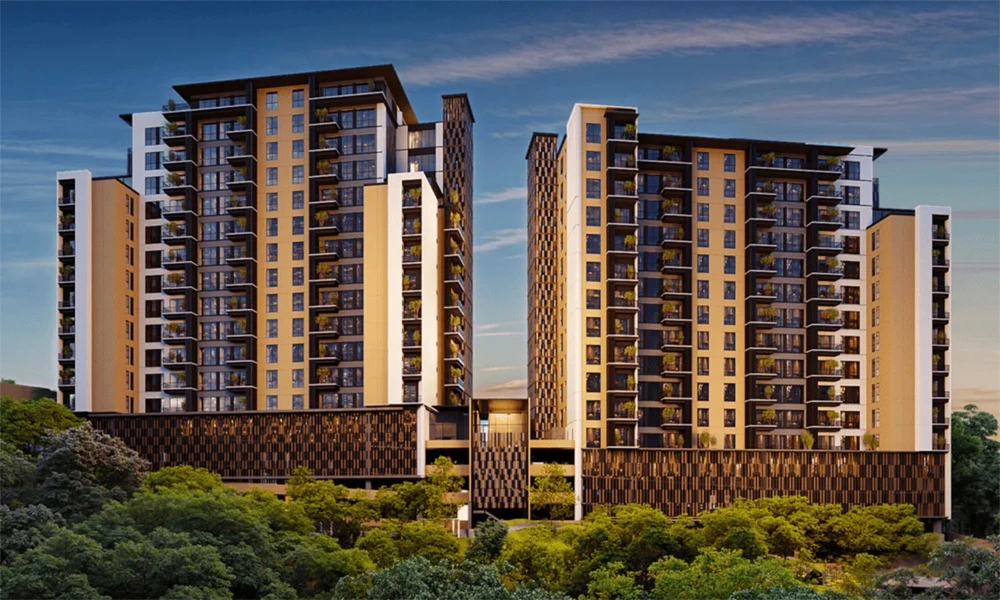
Source: https://unsplash.com/photos/aerial-photography-of-town-aIqXSwR76kU
The property investment landscape is changing, and smart investors are taking notice. While everyone else fights over expensive apartments in major cities, a growing number of savvy buyers are turning their attention to regional markets. These areas offer something the big cities can’t: genuine value, less competition, and real growth potential.
If you’ve been thinking about diversifying your property portfolio or making your first investment move, regional markets deserve a serious look. This guide will walk you through everything you need to know about investing beyond the metropolitan areas, from identifying the right opportunities to building the team that’ll help you succeed.
Why Regional Markets Are Attracting Serious Investors
Let’s start with the obvious question: why are experienced investors suddenly interested in regional areas?
Economic Growth in Secondary Cities
Regional areas aren’t what they used to be. Many secondary cities are experiencing genuine economic transformations. Government infrastructure projects are connecting these areas better than ever before. New highways, improved rail links, and upgraded airports are making regional living more accessible.
Businesses are also relocating or expanding into these areas, attracted by lower operating costs and access to talent pools that don’t want to live in expensive capitals. And here’s the game-changer: remote work has untethered thousands of professionals from their office desks, meaning they can now live anywhere with decent internet.
Affordability Compared to Capital Cities
The numbers tell a compelling story. While you might need a million dollars for a modest apartment in Sydney or Melbourne, that same budget could secure you a substantial property in a thriving regional market. This affordability gap isn’t just about entry prices—it extends to rental yields too.
Regional properties often deliver rental returns that city properties simply can’t match. You’re also dealing with less competition from institutional investors and cashed-up buyers, giving you more negotiating power and time to make informed decisions.
Lifestyle Migration Trends
The pandemic fundamentally changed how people think about where they live. Suddenly, proximity to an office became less important than quality of life. Families started prioritizing space, nature, and community over a short commute.
Coastal towns and regional areas with natural amenities have seen significant population increases. Young professionals, retirees, and families are all moving to these areas, creating sustained demand for both rental properties and purchases.
Residential Development Opportunities in Coastal Regions

Source: https://unsplash.com/photos/city-skyline-across-body-of-water-during-daytime-rll7767UpFc
Coastal regional markets represent some of the most interesting opportunities right now. These areas combine lifestyle appeal with solid economic fundamentals.
Identifying High-Growth Coastal Markets
Not all coastal towns are created equal. You want to look for areas showing consistent population growth over several years, not just a pandemic spike. Check whether the local economy is diverse—towns dependent on a single industry can be risky.
Tourism infrastructure is another positive indicator. If the area attracts visitors year-round, it suggests established amenities, good accessibility, and potential for short-term rental income if that interests you.
Working with Quality Construction Professionals
If you’re considering a custom build or development project in these emerging coastal markets, choosing the right construction partner becomes critical. Areas like Port Macquarie exemplify this opportunity—they’re established enough to have experienced professionals but growing enough to offer genuine value.
When evaluating construction options, you want to work with a builder port macquarie residents trust—someone with a proven track record in the local market who understands coastal building requirements, council regulations, and realistic timelines. Local builders know the area’s quirks, from soil conditions to weather patterns, which can significantly impact your project’s success and budget.
Understanding Development Timelines and Costs
Custom builds in regional areas typically take longer than in cities where construction resources are more abundant. Plan for extended timelines and build contingency funds into your budget. Market conditions, weather delays, and material availability can all affect your schedule.
Budget carefully for soft costs too—things like council fees, inspections, and professional consultations add up quickly. Regional areas might offer lower land costs, but don’t assume everything will be cheaper.
Diversification Through Multiple Property Types
Smart investors don’t put all their eggs in one basket. A balanced portfolio considers different property types and sectors.
Balancing Residential and Alternative Investments
While residential property is familiar and relatively straightforward, diversification into other property types can enhance your portfolio’s stability. Different property sectors respond differently to market cycles, which helps smooth out your overall returns.
Think about your risk tolerance and investment timeline. Some investors focus purely on long-term residential holds, while others mix in different assets to create multiple income streams and growth opportunities.
Assessing Market Depth and Liquidity
Regional markets typically have less liquidity than city markets. This means it might take longer to sell when you want to exit. Make sure you’re comfortable with this reality before committing significant capital.
Look at sales volumes and days-on-market statistics for your target area. A healthy market should show consistent transaction activity, not just a few sporadic sales. Consider whether you’re buying for long-term hold or eventual resale—this will influence which markets make sense for your strategy.
Infrastructure Projects as Investment Catalysts
Major infrastructure announcements can transform regional markets virtually overnight. A new hospital, university campus, or major employer relocating to the area can drive substantial growth.
Stay informed about government plans and private sector investments in your target regions. These developments create employment, attract population, and increase property demand—exactly what you want as an investor.
Professional Guidance for Complex Transactions

Source: https://unsplash.com/photos/two-men-facing-each-other-while-shake-hands-and-smiling-NbtIDoFKGO8
As you expand your investment activities, the complexity increases. This is where building the right team becomes essential.
Understanding Different Property Sectors
Residential investment is one thing, but moving into other property sectors introduces new complexities. Non-residential properties operate under different rules, have different financing requirements, and require specialized knowledge to evaluate properly.
Each property type has its own risk-reward profile. Understanding these differences before you invest prevents costly mistakes and helps you make decisions aligned with your goals.
Building Your Investment Team
Your investment team makes or breaks your success. At minimum, you’ll need a good solicitor familiar with property transactions, an accountant who understands investment structures, and often specialized property advisors.
When you’re expanding beyond traditional residential property, specialized representation becomes particularly valuable. For instance, if you’re considering retail, office, or industrial assets, working with a commercial buyers agent gives you access to off-market opportunities and expertise in negotiating these complex transactions. They understand valuation methods, lease agreements, and market dynamics that differ significantly from residential property.
Due Diligence and Market Research
Never skip due diligence, regardless of how attractive a deal looks. Research the local council’s development plans, environmental constraints, and zoning regulations. These factors can significantly impact your property’s value and your ability to develop or modify it.
Talk to locals, visit at different times, and spend time understanding the area before committing. Regional markets can have nuances that aren’t obvious from online research alone.
Financing Strategies for Regional Property Investments
Getting your financing right impacts your returns significantly.
Lending Considerations in Regional Markets
Banks can be more conservative when lending for regional properties. They might require larger deposits or offer slightly higher interest rates compared to city properties. Property valuations might also come in lower than expected, affecting your borrowing capacity.
Shop around with different lenders—some are more comfortable with regional markets than others. Consider using a mortgage broker who knows which lenders favor regional deals.
Cash Flow Management and Projections
Regional properties often offer better rental yields, but factor in vacancy periods realistically. Smaller rental pools mean finding tenants might take longer. Build a cash buffer to cover your mortgage and expenses during vacancies.
Calculate all ongoing costs: rates, insurance, maintenance, and property management if you’re not local. These expenses can be proportionally higher in regional areas.
Tax Implications and Structures
New constructions offer depreciation benefits that significantly improve your after-tax returns. Consult with your accountant about the optimal ownership structure—individual ownership, trust, or company—based on your circumstances.
Capital gains tax implications vary depending on your holding period and ownership structure. Plan your investment strategy with tax efficiency in mind from the start.
Conclusion
Regional real estate markets offer compelling opportunities for investors willing to look beyond the major cities. These markets combine affordability, solid yields, and genuine growth potential—a combination that’s increasingly rare in metropolitan areas.
Success in regional investing comes down to thorough research, building the right team, and choosing markets with strong fundamentals. Focus on areas with diverse economies, growing populations, and improving infrastructure.
Whether you’re building a custom home in an emerging coastal town or diversifying into different property types, the key is approaching regional investment with the same diligence you’d apply anywhere else—just with an appreciation for the unique opportunities these markets offer.
Frequently Asked Questions
What makes a regional market attractive for investment?
Look for strong population growth, infrastructure development, and employment diversity. The best regional markets aren’t dependent on a single industry but have multiple economic drivers. Affordability compared to capital cities and lifestyle factors that attract residents are also important indicators of investment potential.
How much capital do I need to start investing in regional property?
Entry points vary by location, but regional markets typically require significantly less capital than metropolitan areas—often 20-30% less. Remember to budget beyond the purchase price for due diligence, professional fees, building inspections, and a contingency fund for unexpected costs.
Should I invest in established properties or new developments?
Both have advantages depending on your strategy. Established properties offer immediate rental returns and proven demand, while new developments provide depreciation benefits and modern amenities but require patience during construction. Consider your timeline, tax situation, and risk tolerance when deciding.
What are the biggest risks in regional property investment?
Limited market depth means properties can take longer to sell. Economic dependence on one or two major employers creates vulnerability. Oversupply risk exists if too many developments launch simultaneously. Mitigate these risks through thorough research, focusing on markets with diverse economies, and maintaining adequate cash reserves.
